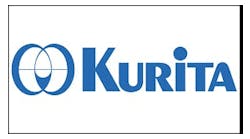U.S. House subcommittee hears testimony on cyanotoxin contamination
American Water Works Association (AWWA) President John Donahue stressed in testimony before the U.S. House Subcommittee on Environment and the Economy that the solution to keep drinking water safe from cyanotoxins begins with reducing nutrient pollution. The subcommittee hearing was in response to the August 2014 event in Toledo, Ohio, where cyanotoxin microcystin was found in finished water as a result of an algal bloom in Lake Erie, causing a “do not drink” advisory to be issued for more than 400,000 people. Donahue explained in the testimony that cyanotoxin contamination is associated with excessive amounts of nitrogen and phosphorus in water. The testimony also highlighted measures AWWA has undertaken to help address the issue, including training on protocols for responding to drinking water emergencies, the creation of materials on safeguarding against algal blooms and the development of a cyanotoxins guide for utility managers.
‘60 Minutes’ features segment on turning wastewater into drinking water
CBS News’ program “60 Minutes” featured a segment on how the Orange County Water District turns 96 million gallons a day of treated wastewater, including sewage, into purified drinking water. The report, “Water,” ends with CBS Reporter Lesley Stahl taking a sip of the purified water. There are many water utilities across the U.S. taking progressive measures to develop a drought-proof, sustainable water supply to help meet public, industrial, agricultural and environmental demands, including: Palm Beach County Utilities in Florida, Wichita Falls in Texas and LOTT Clean Water Service in Oregon.
EPA provides assistance to boost climate resilience for water utilities
EPA announced that up to $600,000 will be provided in training and technical assistance to help water utilities in more than 20 communities strengthen their climate change readiness and resilience. Wastewater, stormwater and drinking water utilities will participate in a multiyear program to help prepare for potential impacts from climate change. The communities will receive technical assistance in using EPA’s Climate Resilience Evaluation and Awareness Tool, software helping users identify threats, assets and adaption options to help lower risk from climate change. Potential challenges include: Intense, frequent storms, droughts, flooding, changes to water quality and rises in sea levels.
New report addresses investment strategies for U.S. aging infrastructure
The Center for Sustainable Infrastructure at The Evergreen State College released a report, “Infrastructure Crisis, Sustainable Solutions: Rethinking Our Infrastructure Investment Strategies,” to help the public, industry leaders and academics rethink how communities are planned and the types of investments needed to operate, manage and rehabilitate U.S. infrastructure systems. The report features a variety of applications to urban planning and the water, transportation and power industries in particular, and includes 70 interviews from the Pacific Northwest’s key infrastructure innovators and thought leaders representing an array of sectors. Findings in the report shows infrastructure investments will have a direct impact on the U.S. environment, economy and local communities.
Dow releases infographic on water reuse and global water scarcity
Dow Water & Process Solutions released an infographic, “Reuse to the Rescue: Learn How Advanced Technology Can Help Combat Water Scarcity,” on water reuse. The infographic highlights a three-step process of microfiltration, reverse osmosis (RO) and ultraviolet (UV) light to treat wastewater. Treating wastewater for reuse can ultimately help reduce global water scarcity, explains Dow’s infographic, adding that one billion people around the world do not have access to clean drinking water. The infographic also features a variety of statistics, including but not limited to: Half the world population will face water scarcity by 2030; China has a water deficit of 10.5 trillion gallons of water per year; and recycled sewage will be a common source of drinking water around the world within 30 years.
Canature N.A. changes company name after recent acquisition
With the recent acquisition of WaterGroup Companies, Canature N.A. Inc. will now be known as Canature WaterGroup™. New products will be introduced under the WaterGroup and Hydrotech trade names, featuring new designs and technologies for residential and commercial applications. As part of a long-term strategy, Canature WaterGroup has renegotiated its supply agreement with Pentair® for Fleck® products, and the company will continue to offer Fleck products during a transition period and aftermarket parts ongoing. Canature WaterGroup plans to continue its growth plan with the addition of regional distribution facilities located in highly populated water quality markets.
EPA awards SBIR grant for a portable instrument analyzing cyanotoxin levels
EPA announced that HJ Science & Technology Inc. located in Berkeley, California, received a $300,000 Small Business Innovation Research (SBIR) grant to build a portable instrument to analyze cyanotoxins in surface waters. This portable instrument will help to protect people from potentially harmful toxic algal blooms in lakes and rivers. High cyanotoxin levels can threaten the health of people and wildlife. Levels are typically measured by collecting field samples and bringing them to a laboratory for analysis, which can be a time consuming and cost-prohibitive process. Once the new portable “lab-on-a-chip” instrument that monitors and detects cyanotoxins in the field is built, HJ Science & Technology will field test the new instrument at Pinto Lake, a popular recreational spot new Santa Cruz, California, that experiences seasonal toxic algal blooms.
Water quality industry remembers John Grayson
The Water Quality Association (WQA) announced that John Grayson, a water treatment professional and WQA member recently passed away. Grayson was the owner of Rainsoft located in Elk Grove Village, Illinois. In 2003, He earned a WQA Ray Cross Award for his pioneer contributions to the water quality industry. Grayson donated his body to science, and no funeral or service was held. In lieu of flowers, his family requested memorial donations be made in his name to the Best Friends Animal Society in Kanab, Utah.
WRF project will help water utilities control leakage losses
The Water Research Foundation (WRF) announced plans to help water utilities better understand and control leakage in a cost-effective manner through recently completed research and the development of a new leakage analysis tool. The Water Audits and Real Loss Component Analysis project (#4372) supplies water utilities with information to more effectively understand the sources of their losses from leakage throughout the water distribution system, as well as a tool to help analyze economic impacts of several intervention strategies. In order to develop a proactive, effective leakage loss reduction strategy, utilities must undertake three significant steps: An evaluation of least-cost real losses as a subcategory on nonrevenue water, a “top-down” water audit and a component analysis of real losses. The WRF and EPA sponsored the research project, which involved 10 utilities of varying sizes from across North America.
IBWA releases study on bottled water industry’s water and energy use
The results of the International Bottled Water Association’s (IBWA) second benchmarking study reveal the amount of water and energy used to produce water products in North America is still less than any other type of packaged beverages. On average, 1.32 liters of water, including the liter of water consumed, and 0.24 mega joules of energy are used to produce one liter of finished bottled water. In total, 76 North American bottled water facilities contributed to the study, a 20 percent increase in participation from the inaugural study conducted last year. Participating facilities in the current study represent 21.6 million liters of bottled water production, around 56 percent of the total 2013 U.S. bottled water consumption.
The Hamilton Project evaluates differences in U.S. water use
The severe drought in Western parts of the U.S. has called national attention to U.S. water resources. The current drought in California has cost the state billions of dollars in economic losses, and businesses across the nation report substantial concerns over water supplies. The Hamilton Project, using newly released data, presents an economic analysis and accompanying interactive feature to illustrate the variation in the level and nature of water use across the nation. Americans withdraw more than 1,000 gallons of water per person each day, putting U.S. per capita water withdraws among the highest in the world; however, not all of this water is consumed or used up. Water scientists distinguish between water withdraws and water consumption, and more of U.S. water withdraws go to power generation and irrigation. Conservation efforts have led to marked declines in total water withdraws, with total withdraws down by 13 percent between 2005 and 2010, as well as a 20 percent decline in withdraws for thermoelectric power and a nine percent decline in irrigation withdraws.
NGWA reveals the Supplier of the Year Award winner
Mark Durham of Gicon Pumps & Equipment Ltd., located in Abernathy, Texas, received the National Ground Water Association (NGWA) Supplier of the Year Award. The award is presented to an individual demonstrating leadership and volunteerism in promoting groundwater and groundwater-related issues to the industry as well as to the public. Throughout the past 20 years, Durham has conducted more than 30 48-hour training courses in pumping systems theory and application to around 600 people, including employees and other pump system professionals such as water well system contractors and engineers. Durham was presented the award during the 2014 NGWA Groundwater Expo and Annual Meeting in Las Vegas.
City of Lima to reduce sewage overflows
The state of Ohio, the U.S. Department of Justice and EPA announced a Clean Water Act settlement has been made with the city of Lima, Ohio, to resolve claims of untreated sewer discharges released during wet weather into the Ottawa River. The proposed consent decree requires Lima to make considerable structural improvements to help control sewage overflows and eliminate overflows from the sanitary sewer system. The consent decree also requires Lima to significantly increase the capacity of its wastewater treatment — from 30 million gallons per day to 70 million gallons a day. Lima will reduce sewer overflows by partially or fully separating sewer lines and stormwater, installing a pump system and by building a 13-million-gallon storage tank. Overall improvements will cost around $147 million, and Lima will also pay $49,000 as a civil penalty, split evenly to Ohio and the U.S.
PEOPLE:
The Water Quality Association (WQA) announced that the WQA Board of Governors has selected David Westman as the new interim executive director. In this role, Westman will be responsible for guiding the organization and conducting a comprehensive review of WQA’s governance structures, financial management, core processes and staff functions. He has had a career in both association and corporate settings and has led or consulted on behalf of such groups as the American Dental Association, College of Neurological Surgeons and Emergency Nurse’s Association. Westman holds an MBA in Finance and Marketing from the University of Chicago and is a certified public accountant (CPA) and certified association executive (CAE).
AdEdge Water Technologies announced that Chad Miller has been promoted to product manager for the biottta™ fixed-bed biofiltration technology. Before his promotion, Miller worked as a project manager for AdEdge since 2009, and in his new role, he will be responsible for team efforts related to marketing, sales and design of the new product launch. Miller’s career in the water treatment industry began in 1997, and he has since provided services and application support for ion exchange, membranes, adsorption, filtration, advanced oxidation and other treatment approaches serving manufacturing, retail and municipal drinking water markets.
Synagro Technologies announced that Mary Lynn Smedinghoff has joined the company as vice president and chief human resources officer. Smedinghoff will be responsible for developing the strategic direction and formulation of all company human resource policies, systems, initiatives and procedures in alignment with the direction and expansion of Synagro. She has considerable experience in talent management, compensation, organizational development, payroll, benefits, manufacturing, human resource shared services and labor relations, publishing, environmental services and consumer related industries. Before her new position with Synagro, Smedinghoff served as the executive vice president, chief human resources officer for Veolia Environnement. She has a master’s degree in human resources and labor relations from Michigan State University and a bachelor’s degree in management from the University of Illinois at Chicago.


